Soto Amicus vs Windmaster – What’s the Difference?
Soto Amicus and Soto Windmaster are ideal backpacking stoves. Compact, easy to use, and benefiting from 11.000BTU power, they are used to heat up or even cook complete meals. It takes about 4 minutes to boil water for 3-4 person tea with these camping stoves as they perform similarly.
Size and pot compatibility are the largest differences between these 2 camping stoves. The Soto Amicus is the smaller version, mainly ideal for lightweight travel. Soto Windmaster is the larger option, mainly useful for a wide selection of pots and pans. The Windmaster also features a larger burner which is recommended for better heat distribution under pots and pans.
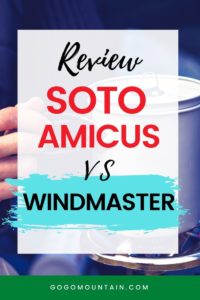
Soto Amicus vs Windmaster
Soto Amicus Characteristics
2.6oz weight
11.000 BTU power
Optional igniter
1.5-hours burn time
Soto Windmaster Characteristics
2.3oz weight
Included ignitor
11.000 BTU power
1.5-hours burn time
Soto Windmaster strengths
Soto Windmaster is one of the durable yet affordable backpacking stoves. It features impressive build quality and a format that allows it to be used both by solo campers and by couples or families.
Larger size
The extra size of the Soto Windmaster comes with a few benefits. The larger size of the backpacking stove allows it to be sturdier. While the weight is similar, the Solo Stove Windmaster has a wider base which allows it to remain stable when you put on more food, when you plan to boil more water or when you simply want to prepare food in larger pans.
The larger construction camping stove is recommended for groups and families. Not every backpacker needs the largest camping stove which means the Amicus serves singles and couples just fine while the larger Windmaster can be a better option for just about any other group.
High compatibility with pots and pans
This larger size allows heavier and larger pans to be used on the camping stove. This means you can prepare more food and actually stir food. Stir-fry foods are ideal for backpacking and camping since they are easy to make and can be planned with just about any type of ingredient.
Wind protection
The Soto Windmaster is among the most interesting camping stoves for wind protection. Its burner sits closer to the pans than the burner of the Soto Amicus which means the Windmaster is more professional and highly suitable in difficult weather conditions.
High wind is problematic when trying to keep the fire going while camping. But the closer burner to the pan allows the Windmaster to be the truly weather-protected camping stove. As the name of the stove suggests, the high wind protection recommends it in extreme backpacking conditions such as the following.
Backpacking and cooking food at high altitude is possible with the Windmaster and a bit more difficult with the Amicus. Preparing a meal in the spring and fall in high wind and rainy weather is also easier on the Windmaster. Backpackers worried about the lack of shelter in their camping area also see the Windmaster as the ideal companion for just about any avid backpacker.
Larger burner ideal for simmering
Cooking food in a liquid or simmering is a slow cooking method. It uses a liquid (typically water) for slower cooking. The water temperature is typically just below the boiling point which means maximum heat isn’t recommended. However, a larger burner is ideal for this healthy cooking method. The Soto Windmaster is among the ideal backpacking stoves for simmering.
The larger burner is also better at frying. Pan-frying food is among the favorite methods of cooking in the outback. This is why it can be one of the best methods of preparing a quick breakfast when in a rush. The larger burner of the Soto Windmaster allows campers to use larger pans which allow frying more food at once.
Not as noisy as the Soto Amicus
Noise is created by the burner when cooking. Soto Amicus has been reviewed as noisy, mainly due to its smaller burner which has to deal with the same BTU output. If you value quietness the Soto Windmaster is a better choice. It can be one of the backpacking stoves parents use early in the morning while children are sleeping late in tents or hammocks undisturbed by noise.
A better heat regulator
The regulator on the Soto Windmaster is highly responsive. There’s no regulator on the standard Soto Amicus and a lower-quality regulator if you decided to get it as an extra with the smaller camping stove. The regulator of the Windmaster is also likely to last longer.
Soto Amicus strengths
Small but powerful, the Soto Amicus is among the most revered compact backpacking stoves. It fits a backpack easier, it’s slightly lighter, and it comes with a more user-friendly profile for beginners.
Compact design
Smaller by a couple of inches in height and 0.5 inches in diameter, the Soto Amicus is the compact choice of the brand. It offers the same 11.000 BTU output but in a smaller form factor. This is seen both as a benefit and as a drawback, depending on the situation.
A smaller camping stove is beneficial when carrying a lot of gear. It takes up less space in the backpack. The same smaller camping stove is also easier to handle. On the other hand, a smaller camping stove also takes smaller pots and pans which means it can’t be used for as many large meals as the Soto Windmaster.
Sold with or without a fire starter
The Soto Amicus might be a bit more affordable than the Windmaster, but the fire starter is sold as an extra. This means users need to pay more to get the same simplicity when getting the fire going. On the other hand, not every camper needs a fire starter, to begin with.
Simpler to use
Smaller camping cooking tools and utensils are generally simpler to use. They are lighter and easier to handle. Cleaning these smaller backpacking stoves is also easier. Busy campers such as backpackers who need to cover a lot of ground each day might not have the time to clean a larger camping stove such as the Soto Windmaster. This is where the compact Soto Amicus handles easier. However, easy use should not be confused with a stable cooking surface as the smaller footprint of the Soto Amicus isn’t as stable as on the heavier Soto Windmaster.
Soto Amicus vs Soto Windmaster – Summary
Both Soto’s Amicus and Windmaster are reliable camping stoves. They are made with a similar design and they offer the same 11.000BTU output. However, they are made for slightly different users as they have different strengths and different weaknesses.
The Soto Amicus is recommended for lightweight camping, short hikes, and 1-2 people. The Soto Windmaster is recommended for longer camping sessions, especially in the most difficult terrains. High altitude camping and backpacking are easier with the Windmaster since the camping stove’s burner sits closer to the pan than the burner of the Soto Amicus.
Fuel consumption is exactly the same on both camping stoves. They both use 8oz canisters which burn with the largest flame for 1.5 hours. This covers preparing meals for up to a few days. Extra 8oz canisters are needed for those out camping with the family as they need to prepare more food every day.
Breeo vs Solo Stove – Which is Better?
Ohuhu vs Solo Stove – 6 Reasons To Choose The Best For You
BioLite CampStove 2 Review | Is It An Energy Efficient Camp Stove?

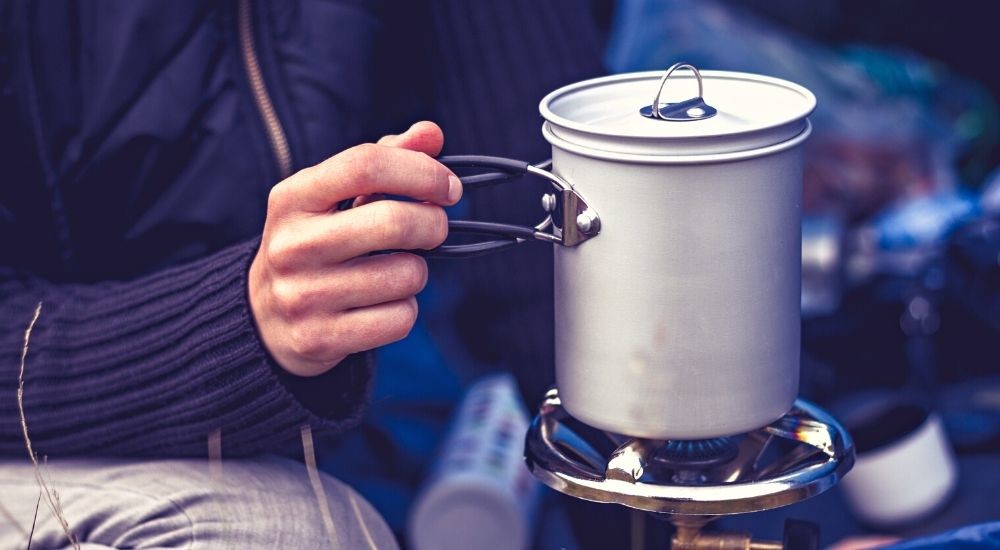



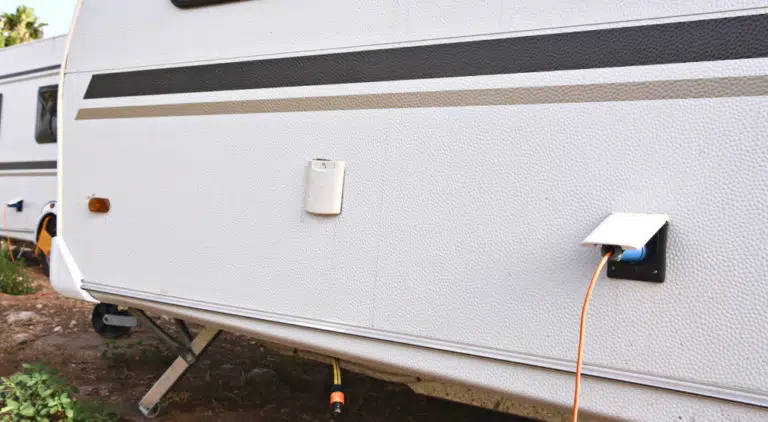
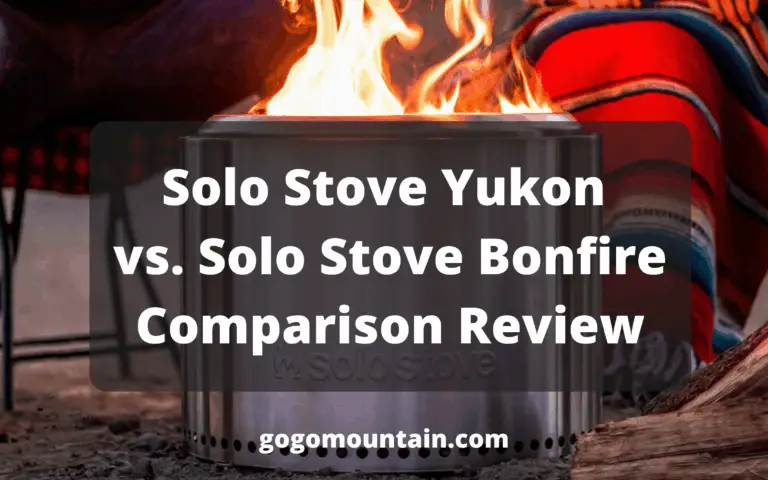
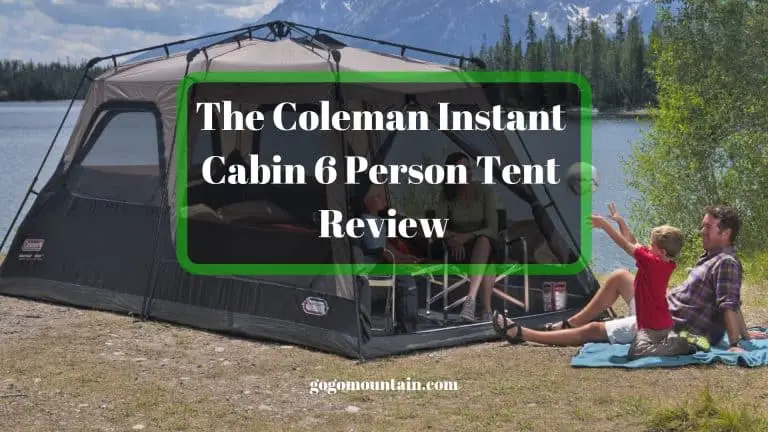
![Sun Dolphin Aruba 10 Kayak Review [2022] – Pros and Cons](https://gogomountain.com/wp-content/uploads/2019/05/abc-768x402.jpg.webp)
